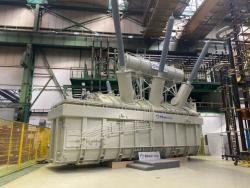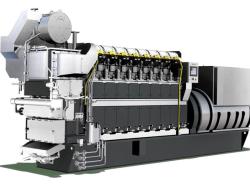
OR WAIT null SECS
© 2024 MJH Life Sciences™ and Turbomachinery Magazine. All rights reserved.
Firm baseplates ensure trouble-free oil console operation
Oil console baseplates should be filled with cement for mass after checking for pipe stress and soft foot on pumps and drivers, to ensure maximum pump, driver and instrument reliability.
Horizontal oil console baseplates (the oil console design preference) do not completely support all components, and do not prevent support member vibration, which affects component and instrument reliability.
(If the baseplate is not filled with cement, horizontal oil console support member vibration will affect instrument reliability)
Filling the console support frame completely with concrete will provide a firm, vibration-free support, and will optimize the MTBF of all components and instruments. Ensure that all piping alignment and soft foot checks, and any corrective action to them, are complete before filling the console baseplate.
Console construction
Auxiliary equipment consoles or modules house most of the components present in the auxiliary systems. Their construction should be reviewed to ensure proper stiffness and facilities for installation on site.
Many horizontal consoles are constructed in a flexible manner that can result in bending or excessive pipe strains introduced to components during shipment and at installation. It is suggested that full length cross members be positioned as a minimum under pumps, coolers and filters on the equipment baseplate.
If the baseplate is to be grouted in the field, grout and vent holes should be specified and reviewed for accessibility to pore grout when equipment is installed on the baseplate. In addition, it is strongly recommended that after perimeter and support grouting, the entire baseplate be filled with cement for added support rigidity.
When the baseplate has not been filled with cement, horizontal oil console support member vibration will affect pump, driver, other component and instrument reliability, and can cause unscheduled shutdowns of critical equipment.
Low pump bearing, driver bearing and pump seal MTBFs can result from baseplate vibration. In addition, critical equipment console trips have been caused by auxiliary pump start switch damage, resulting from baseplate vibration, that prevented the auxiliary pump from starting when required.
This best practice has been used since the early 1980s, and its use has resulted in trouble-free oil console start-up and operation, and oil systems of the highest reliability.



